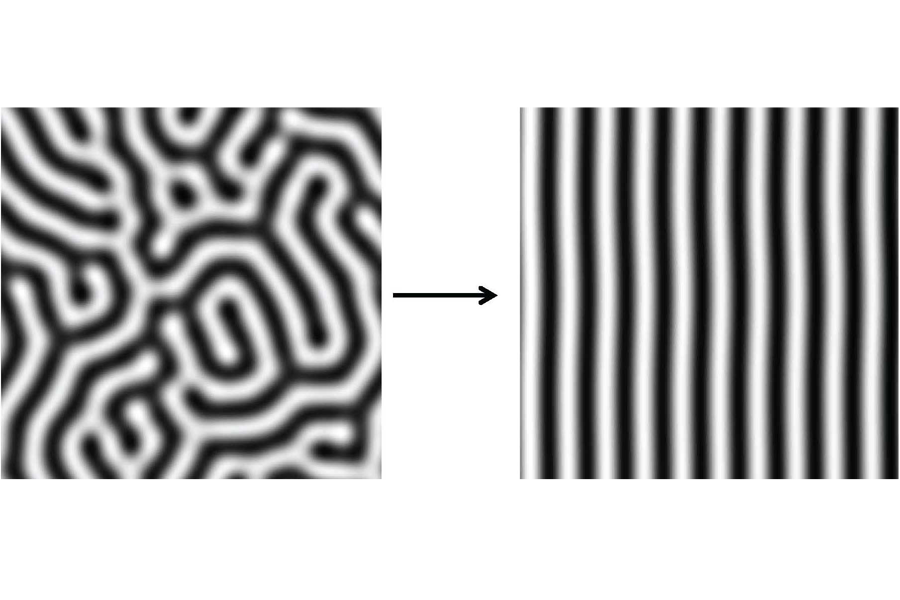Why do tigers have vertical stripes? Check the math, say researchers.
Loading...
Scientists have discovered that the stripes exhibited on animals like zebras and tigers can be defined by mathematical predictability.
The study, published today in the journal Cell Systems, offers a possible explanation for why different species’ stripes move the direction they do. It has to do with how much of one substance or another is produced while the baby animal is still in its mother’s womb.
The study builds upon early research in the field that was conducted by Alan Turing, the famed British mathematician and codebreaker who near the end of his life turned his skills to mathematical biology.
Dr. Turing’s work produced several insights, among them the theory that the unstable diffusion that occurs during a chemical reaction is what can cause different structures like zebra stripes to grow in a certain direction.
The Turing model gives a mathematical explanation for stripes and other patterns, but doesn’t explain why some species, like tigers, have vertical stripes and others, like okapis, have horizontal ones. This study seeks to answer that question.
"We wanted a very simple model in hopes that it would be big picture enough to include all of these different explanations," lead author Tom Hiscock, a PhD student at Harvard Medical School, said in a press release. "We now get to ask what is common among molecular, cellular, and mechanical hypotheses for how living things orient the directions of stripes, which can then tell you what kinds of experiments will (or won't) distinguish between them."
In the study, Mr. Hiscock created a model that examined the physical changes that each contribute to stripe orientation: “production gradient,” the substance that amplifies stripe pattern density; "parameter gradient," or the substance that changes one of the parameters in stripe formation; and finally, the physical changes that contribute changes in direction to the molecular, cellular, and mechanical origin of stripes.
The model relies upon a simple equation that has also been used by other researchers when examining stripe formation. The equation rests on the logic of local pattern density and the concept that those local patterns will recur over a larger space like skin or fur.
“We can describe what happens in stripe formation using this simple mathematical equation, but I don't think we know the nitty-gritty details of exactly what molecules or cells are mapping the formation of stripes," Hiscock said in the release.
The simple equation wasn’t reliable for more complex models or models that have multiple instabilities besides the Turing instability. But it was successfully able to predict more complex patterns, even if only partially.
Previous research has looked into the possibility that zebra stripes may be an evolutionary defense against flies. This study from Hiscock and the Harvard research team offers an explanation for why those stripes occur so regularly.







